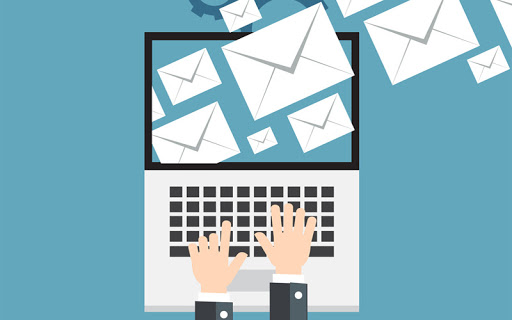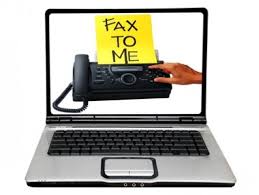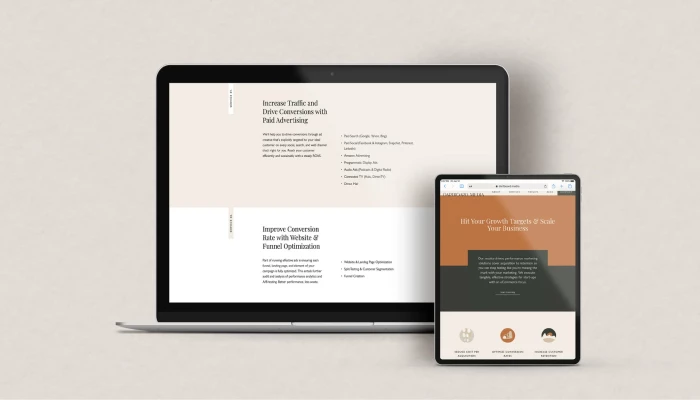Hello!
Understanding Fax and Email
 Understanding the distinctions between fax and email is essential for effective business communication in today's digital landscape, where secure faxing and email services are integral components.
Understanding the distinctions between fax and email is essential for effective business communication in today's digital landscape, where secure faxing and email services are integral components.
Despite the increasing adoption of online faxing and electronic fax solutions, traditional fax machines continue to hold significance in certain industries due to their compliance with standards such as HIPAA regulations.
Additionally, the evolution of fax technology and email communication underscores the diverse applications of these methods across various business operations.
Organizations must meticulously evaluate factors such as privacy concerns, service reliability, and transmission speed when selecting between these communication channels.
What is Fax and How Does it Work?
Fax, or facsimile, is a method of transmitting scanned printed materials over a telephone line, typically employing a fax machine that encodes documents into electronic signals for delivery. This traditional form of document transmission has evolved with the advent of electronic fax services, which allow users to send and receive faxes online, thereby enhancing convenience and reducing reliance on physical fax machines.
Secure faxing solutions, which include data encryption and adherence to industry standards, have become essential for organizations that prioritize document integrity and privacy.
The fundamental operation of a fax machine involves scanning the document with a light-sensitive sensor, converting it into a digital image, and then transmitting this image through fax protocols to a receiving fax machine or service. As businesses increasingly adopt digital practices, electronic fax services have emerged, further streamlining the process and enabling users to manage their faxes from any device with internet access.
Given the evolving landscape of document transmission, the significance of secure faxing practices cannot be overstated. With the rise in cyber threats, the implementation of secure fax solutions is critical to ensuring that sensitive information remains protected during transit, thus maintaining confidentiality and compliance with regulations such as HIPAA and GDPR.
Also read: What Is Email Personalization?
The Basics of Email Communication
Email communication has become an essential component of digital communication, allowing users to transmit text messages, documents, and attachments worldwide within seconds.
The versatility of email is evident not only in its capability to send various types of files but also in the multitude of features it provides, including the organization of conversations, the setting of reminders, and the customization of email signatures. These functionalities considerably enhance the user experience, rendering communication more effective and efficient.
Best practices for managing attachments include ensuring compatibility of file formats and maintaining manageable file sizes to prevent delivery issues.
As reliance on email increases, so does the risk of data breaches, highlighting the necessity for implementing robust email security measures, such as encryption, multi-factor authentication, and comprehensive user training, to strengthen digital communication against potential threats.
Benefits and Drawbacks of Fax and Email
A thorough examination of the benefits and drawbacks of fax and email reveals critical insights that can assist businesses in optimizing their communication strategies.
Online faxing services, in particular, provide secure transmission for sensitive documents, while email communication offers unmatched convenience and speed, facilitating rapid document delivery and accessibility to various file formats.
However, concerns regarding privacy and email security may prompt organizations to refrain from relying solely on email.
Consequently, a balanced approach to communication channels is essential for effective operations in contemporary business environments.
Advantages of Online Faxing
Online faxing has transformed the approach businesses take toward document transmission, providing numerous advantages such as convenience and cost-effective solutions that eliminate the necessity for traditional fax machines and paper. With the capability to send and receive faxes from any location with internet access, online faxing services like Fax.Plus enhance business communication, improve productivity, and promote a paperless environment through user-friendly interfaces.
These services often include features such as document management and integration capabilities, which further facilitate workflow automation.
By choosing online faxing, businesses can significantly reduce their operational costs, as the removal of physical machines and the associated maintenance fees result in substantial savings.
Additionally, companies that prioritize sustainability benefit from minimizing paper waste and conserving natural resources, as online services rely on digital files rather than printed documents.
The intuitive design of contemporary faxing platforms allows employees to navigate these systems with ease, leading to quicker turnaround times for important documents. Thus, adopting online faxing not only enhances the efficiency of document transmission but also aligns with environmentally friendly practices, making it a prudent choice for progressive organizations.
Pros and Cons of Email Communication
Email communication provides significant efficiency, enabling users to swiftly send messages and attachments. However, it also introduces challenges, including privacy concerns and potential security breaches that may compromise sensitive information.
Although the user experience is generally favorable due to intuitive interfaces and the capability for real-time communication, organizations must remain vigilant regarding email security to mitigate risks associated with data breaches and phishing attacks. A thorough understanding of the advantages and disadvantages of email communication can assist businesses in developing more robust communication strategies.
Adopting effective email practices can enhance collaboration and streamline workflows, rendering it a preferred tool in numerous professional environments. Nevertheless, the inherent nature of email can also give rise to miscommunication, as tone and intent may be easily misinterpreted without the subtleties present in face-to-face interactions.
Furthermore, the overwhelming volume of emails received on a daily basis can result in important messages being overlooked, ultimately diminishing overall productivity.
It is imperative for users to implement best practices in email management, such as prioritizing messages and utilizing encryption tools, to safeguard their communications and improve their user experience in the face of these challenges.
When to Use Online Faxing
 Determining the appropriate circumstances for utilizing online faxing can profoundly influence business communication, particularly in situations that necessitate secure document transmission and adherence to industry regulations.
Determining the appropriate circumstances for utilizing online faxing can profoundly influence business communication, particularly in situations that necessitate secure document transmission and adherence to industry regulations.
Online faxing is an effective solution for transmitting sensitive information, such as legal documents and medical records, where the integrity of the document and privacy concerns are of utmost importance.
Moreover, by implementing online faxing solutions, organizations can enhance their faxing capabilities while streamlining workflows and ensuring compliance with regulations such as HIPAA.
Situations Where Online Faxing is Preferred
Online faxing is increasingly favored in various contexts, particularly within business operations that involve remote work, where teams require a secure and efficient means of document sharing.
This method streamlines operational processes, allowing individuals to concentrate on core activities rather than being encumbered by traditional paper-based approaches.
For instance, real estate agents frequently utilize online faxing to promptly send property listings and agreements, ensuring that clients can review and sign documents without delay, regardless of their location.
Similarly, healthcare professionals employ fax applications to transfer patient records and sensitive information, thereby maintaining compliance with privacy regulations while enhancing the speed of information exchange among remote teams.
These applications not only enable immediate document delivery but also promote collaboration among geographically dispersed teams, thereby fostering a more agile work environment.
Alternatives to Online Faxing
While online faxing remains a widely utilized method for document transmission, several alternatives are available that can better address diverse business requirements. These include email and cloud fax services, which offer secure document sharing capabilities.
Such digital communication tools give the power to users to transmit files without relying on traditional fax machines, frequently enhancing the user experience and allowing for integration with existing workflow automation systems. Organizations must carefully evaluate the advantages and disadvantages of these alternatives, especially concerning document integrity and compliance with relevant regulations.
Alternatives such as secure file transfer protocols and encrypted messaging applications are increasingly gaining popularity, facilitating safe and efficient document exchange. Additionally, electronic signature solutions often complement these methods by streamlining approval processes while ensuring adherence to compliance standards.
Businesses may also explore the use of virtual data rooms for sensitive transactions, particularly in the context of mergers and acquisitions, due to their robust security features and collaborative environment.
Ultimately, the selection of a fax alternative should be aligned with the specific needs of the organization, ensuring that communication remains both efficient and secure, thereby supporting seamless operations in a digital landscape.
Thank you!
Join us on social media!
See you!






